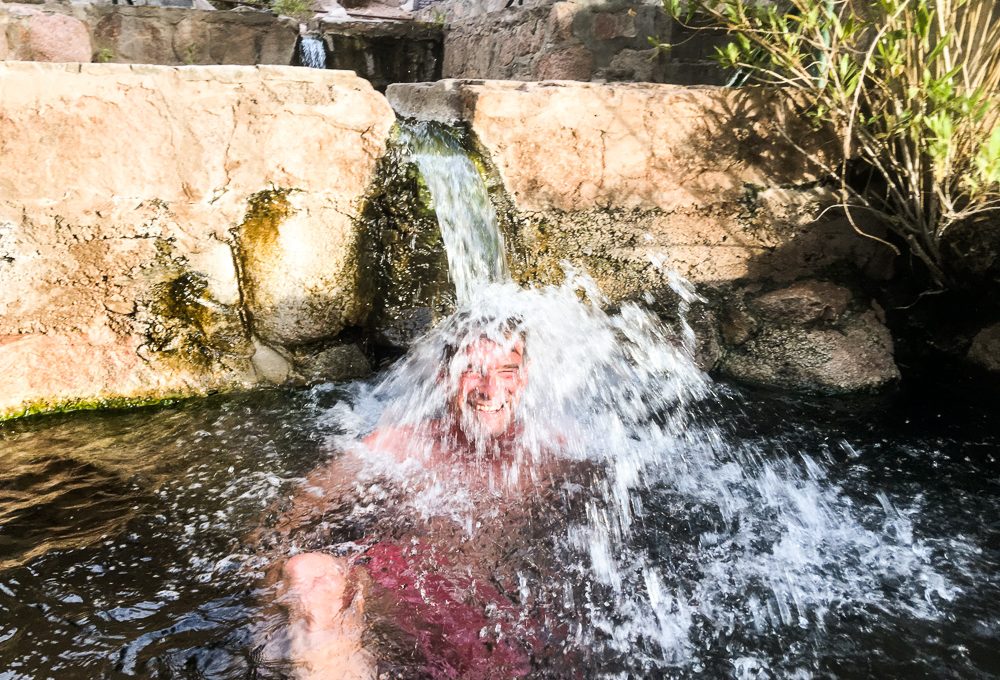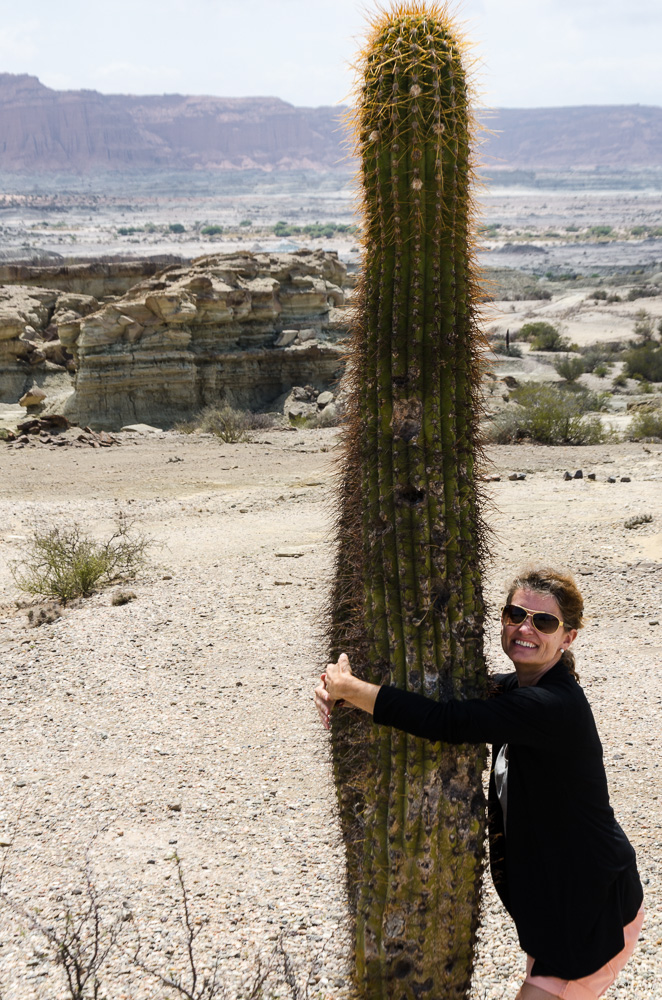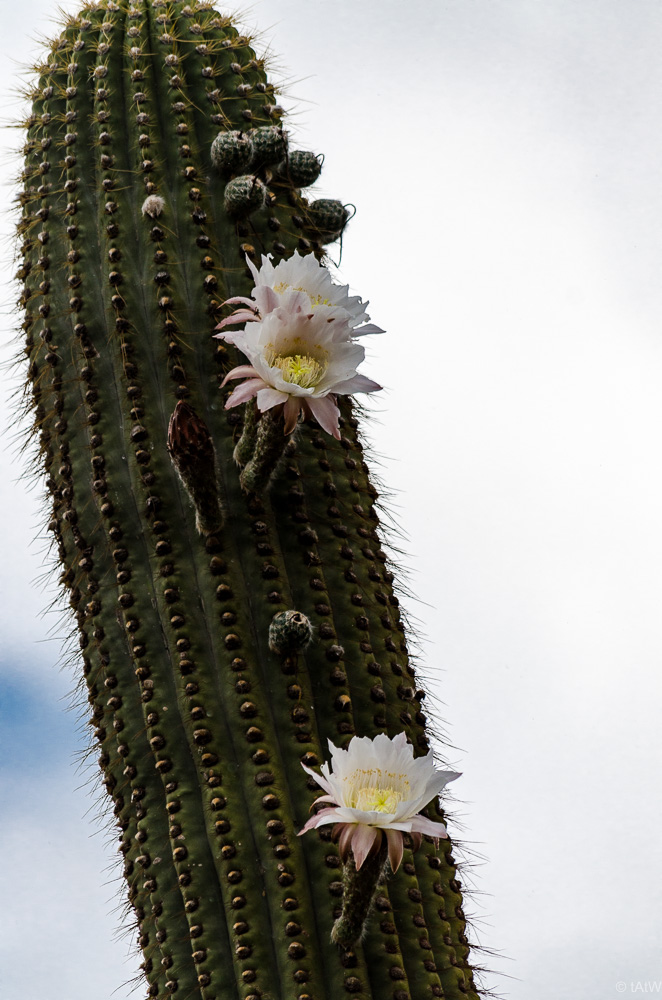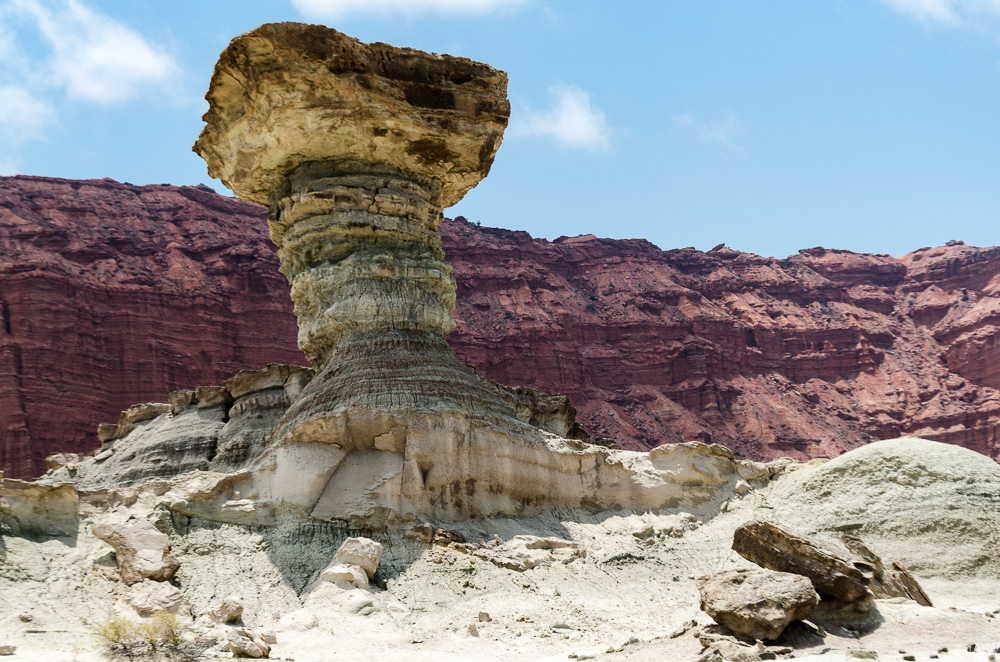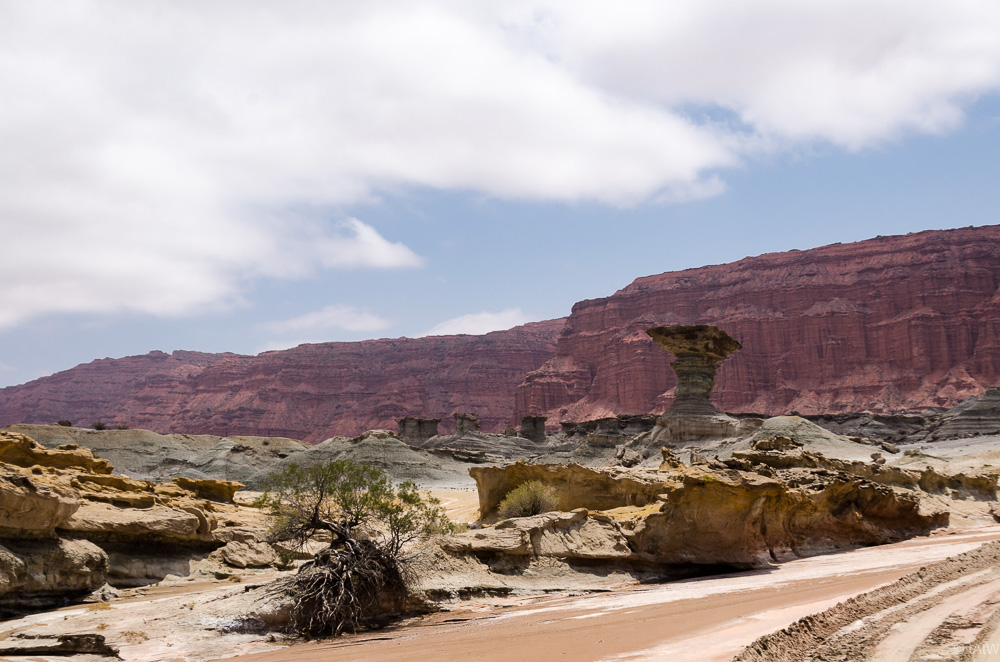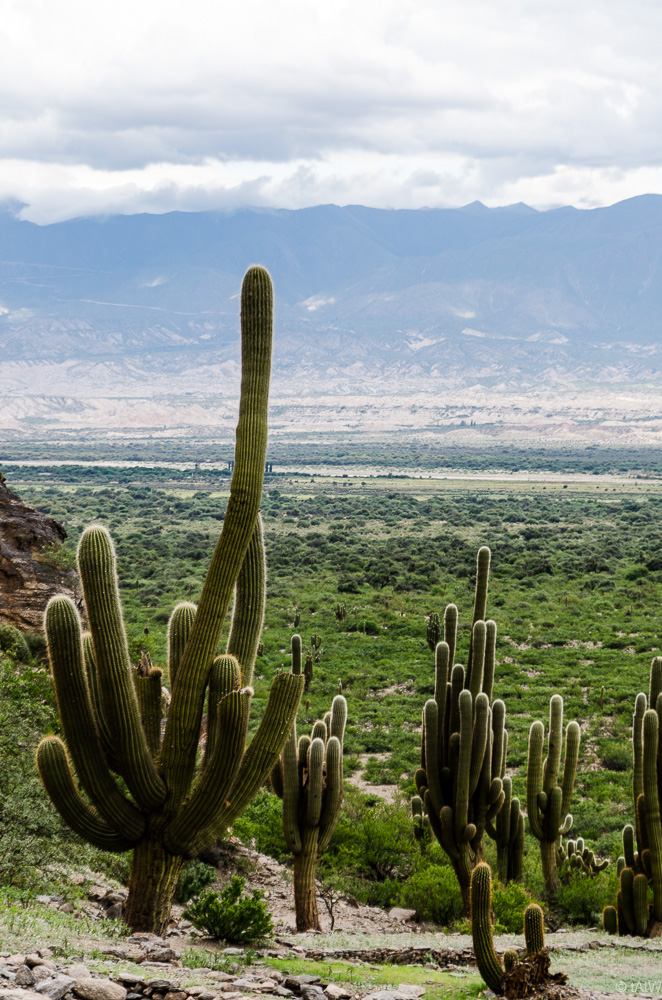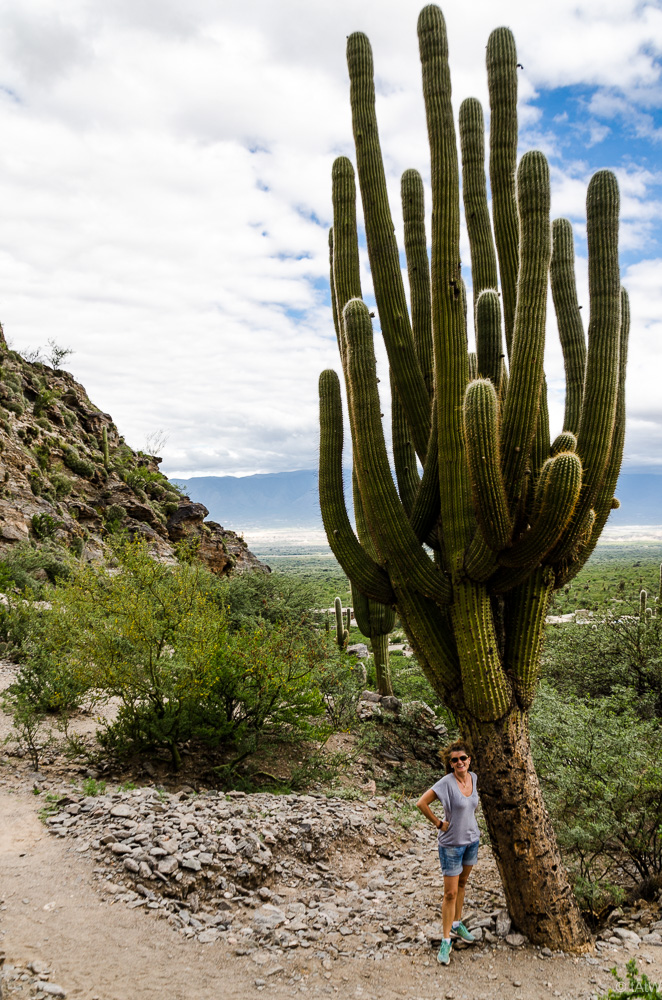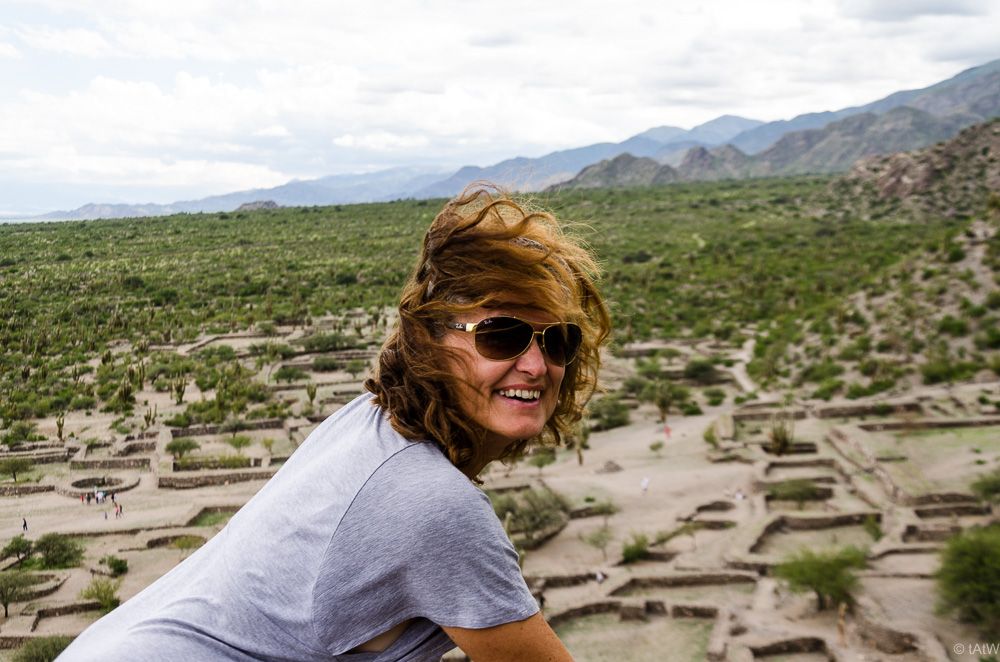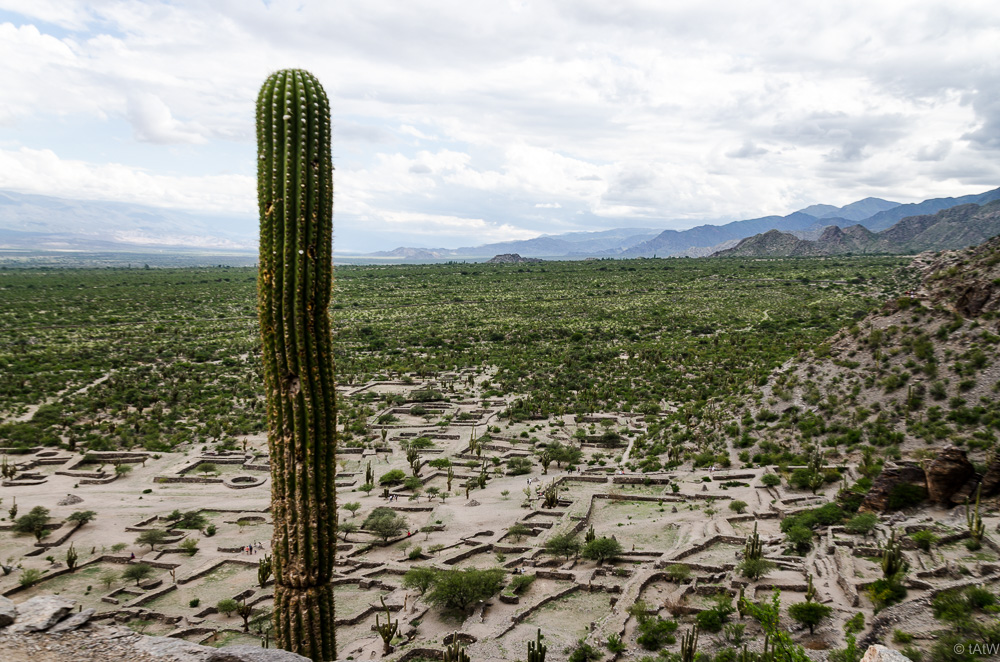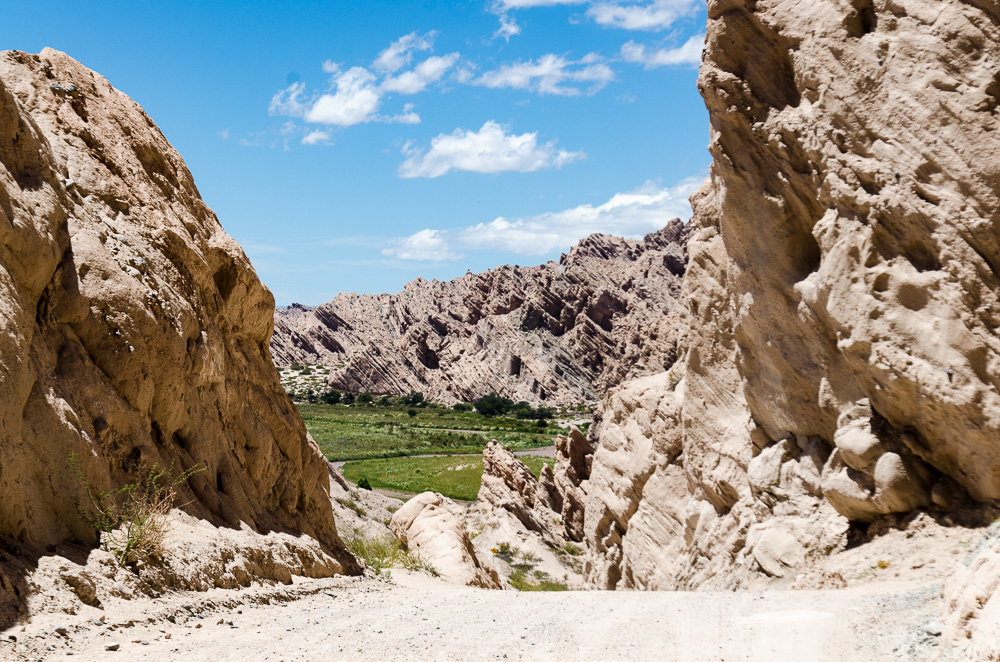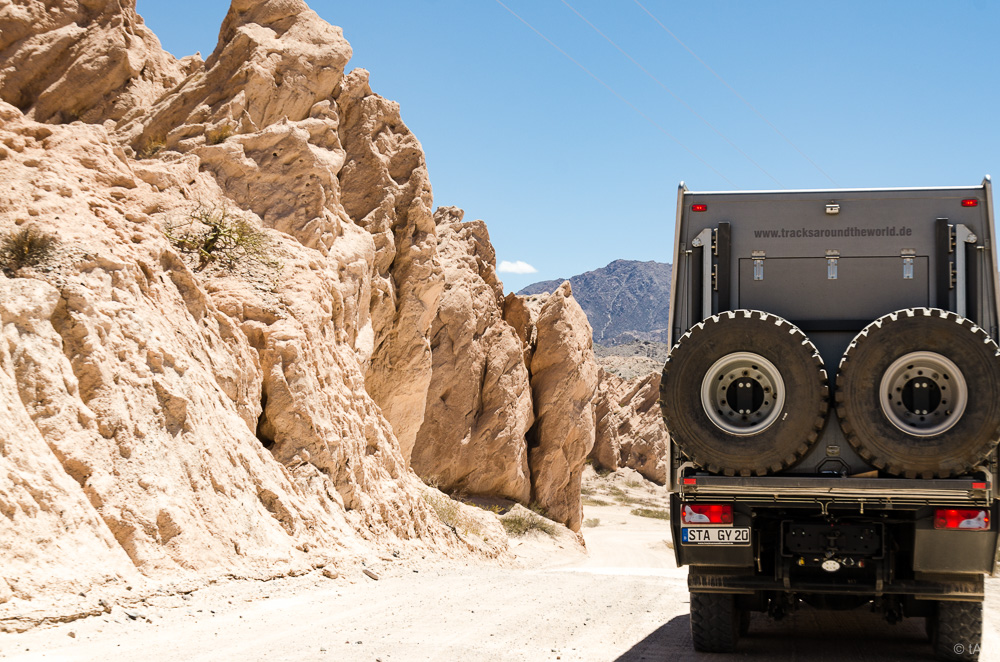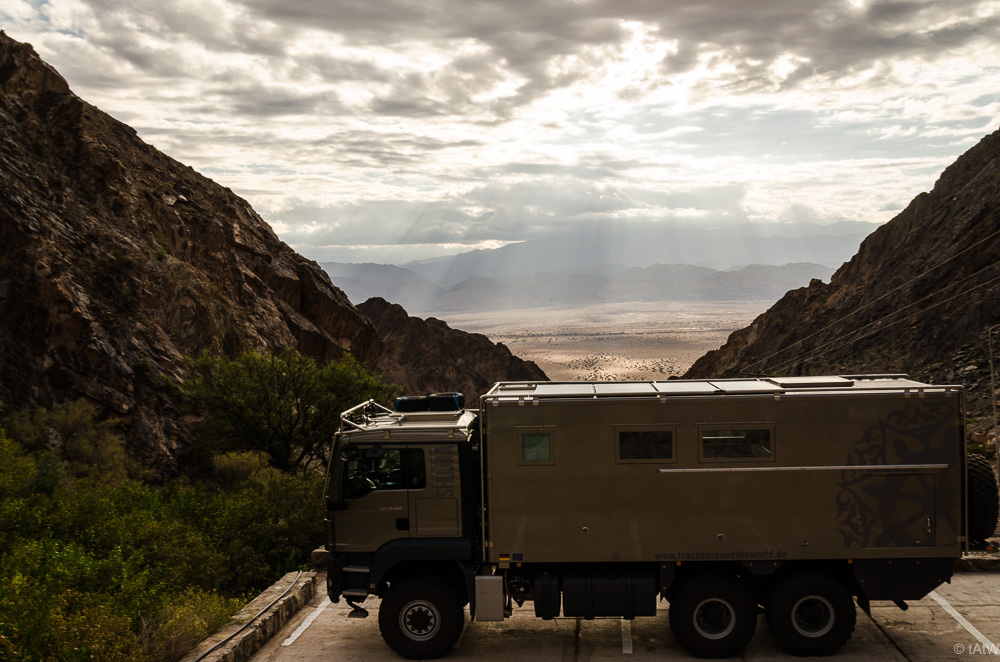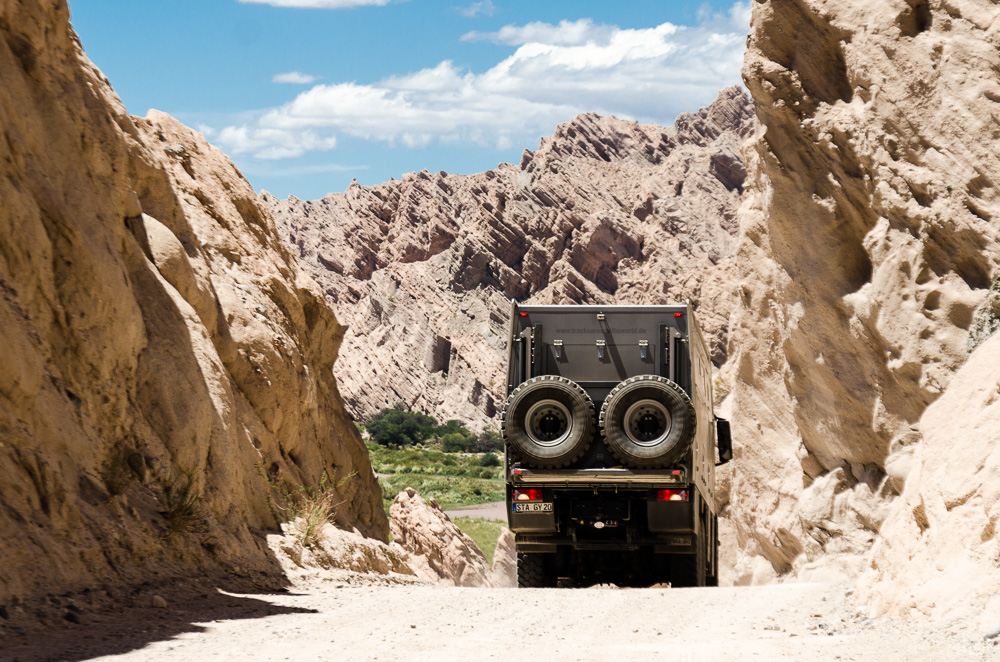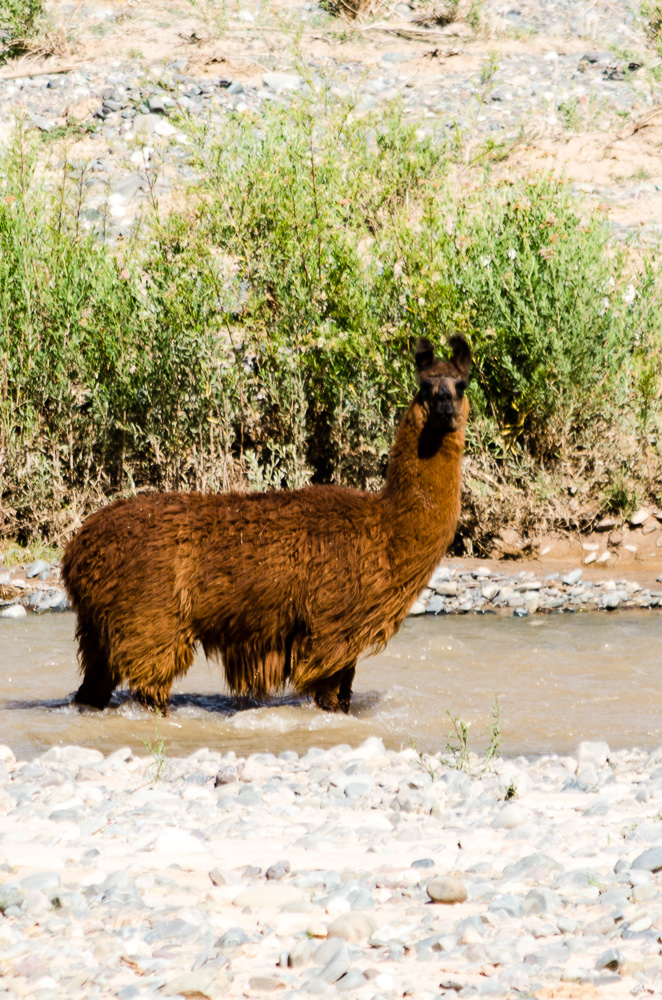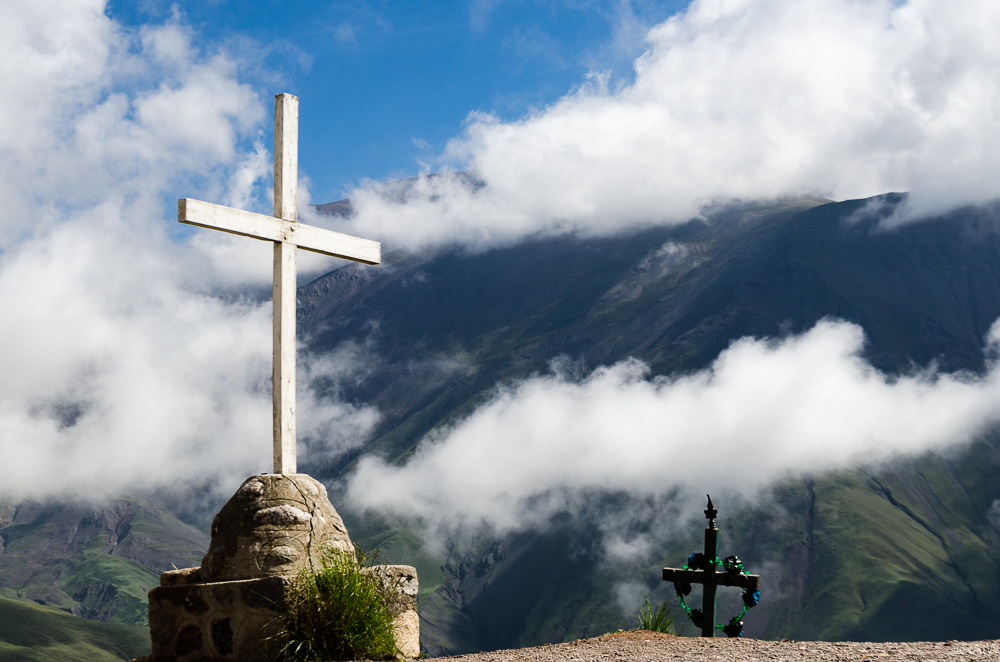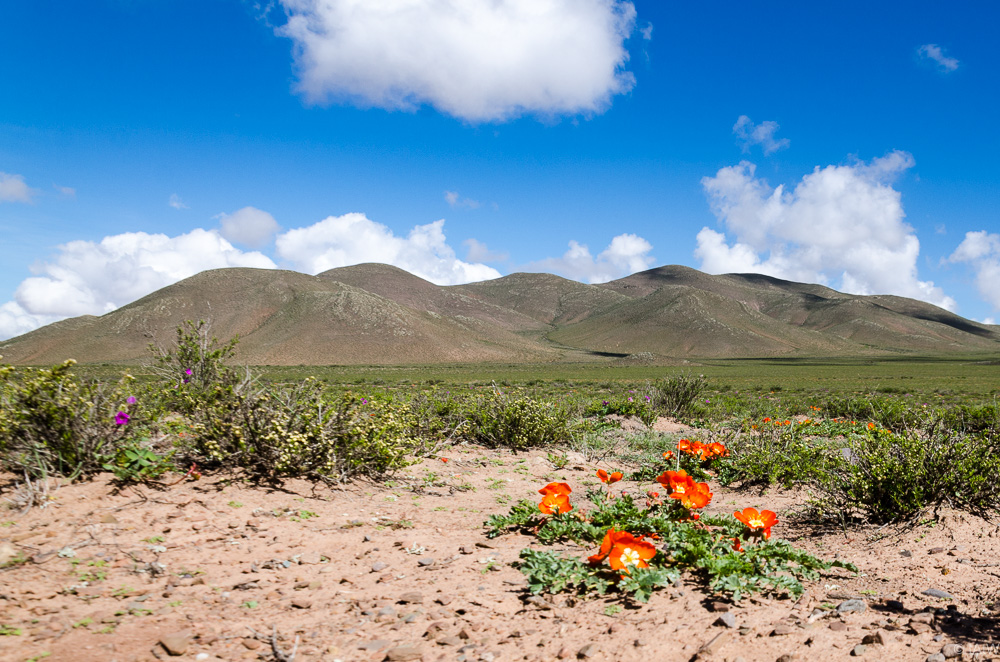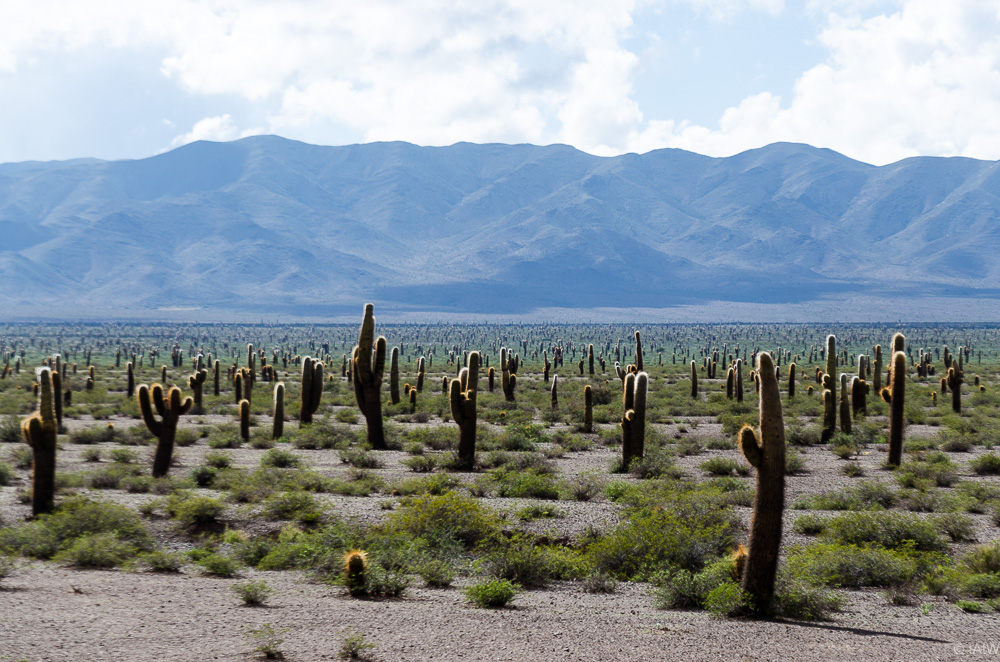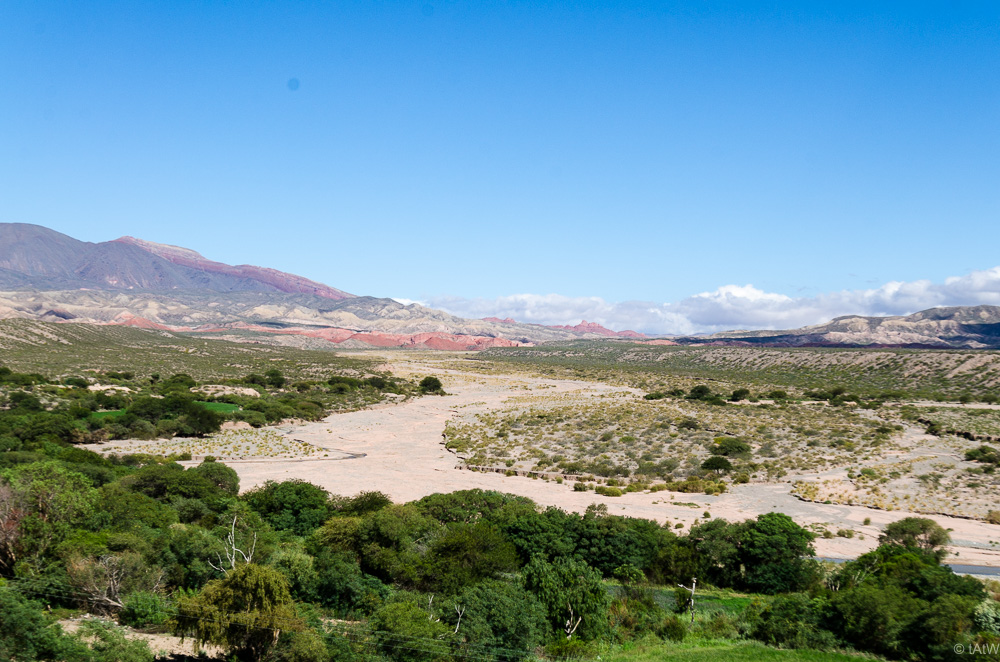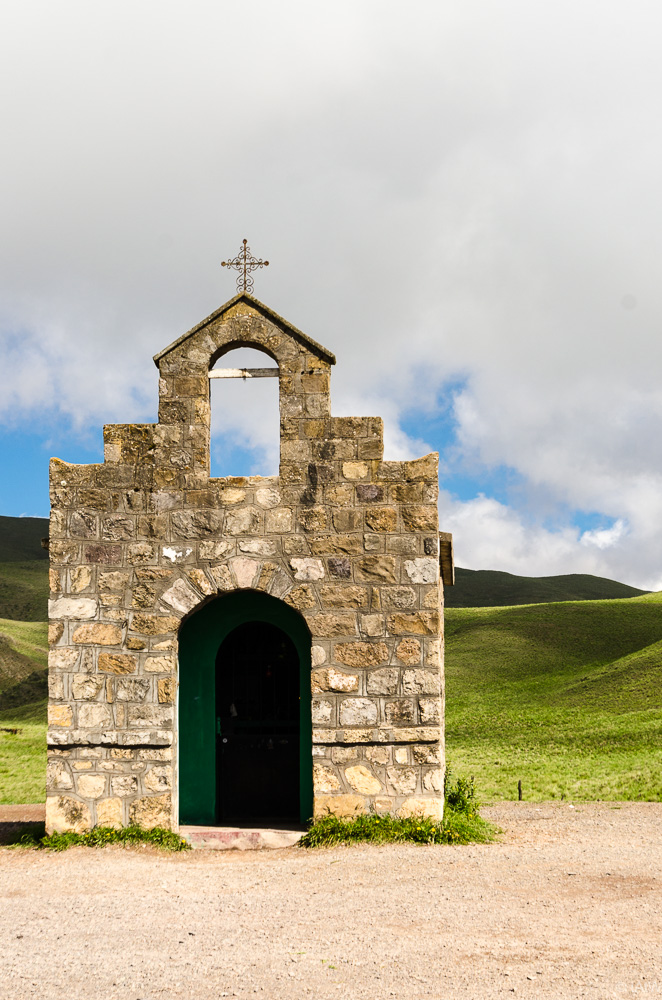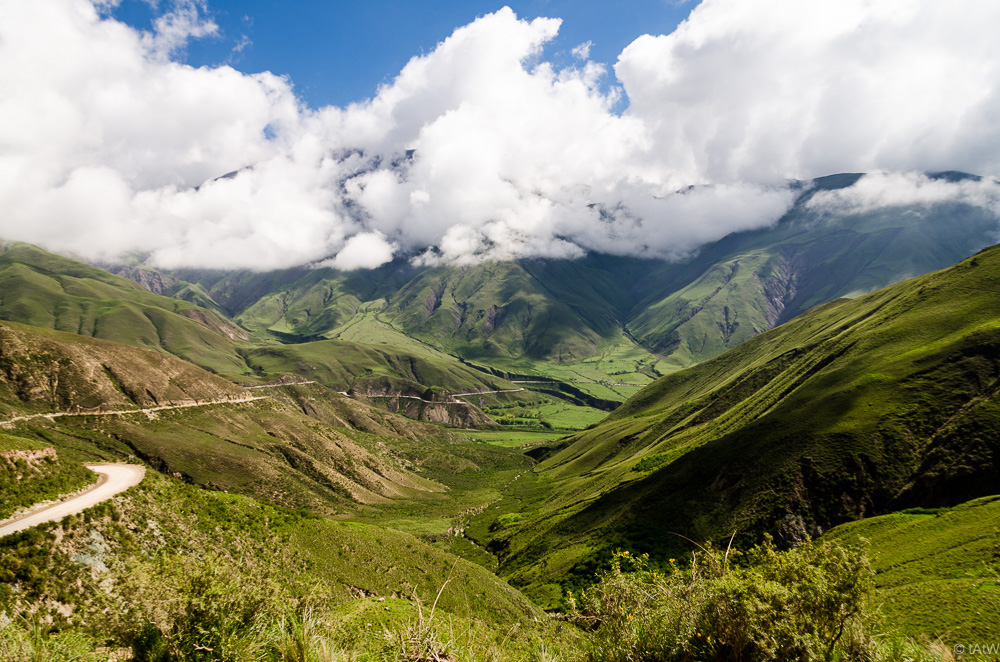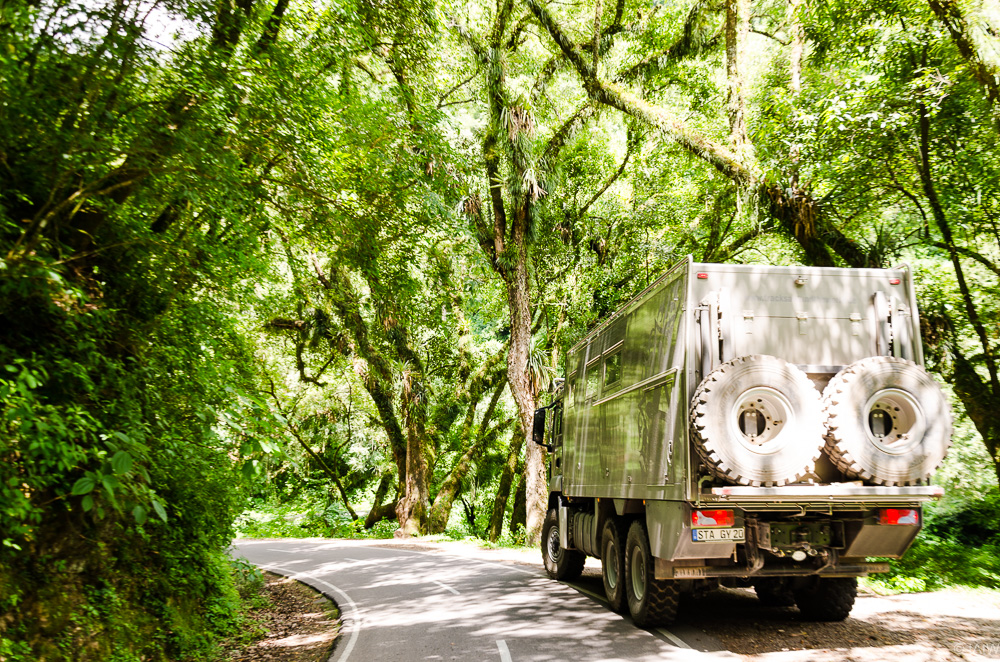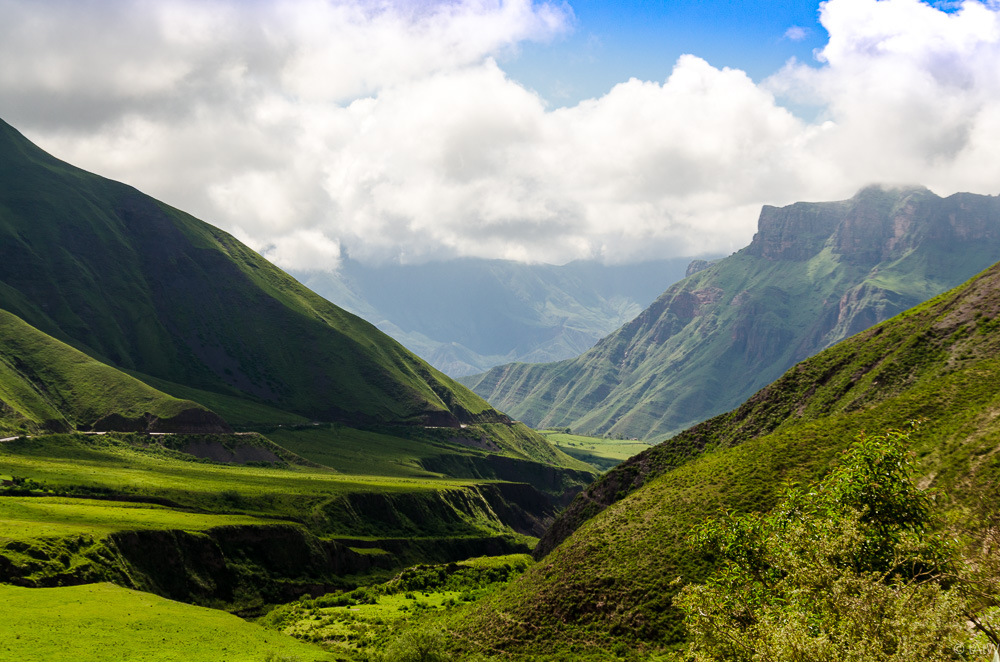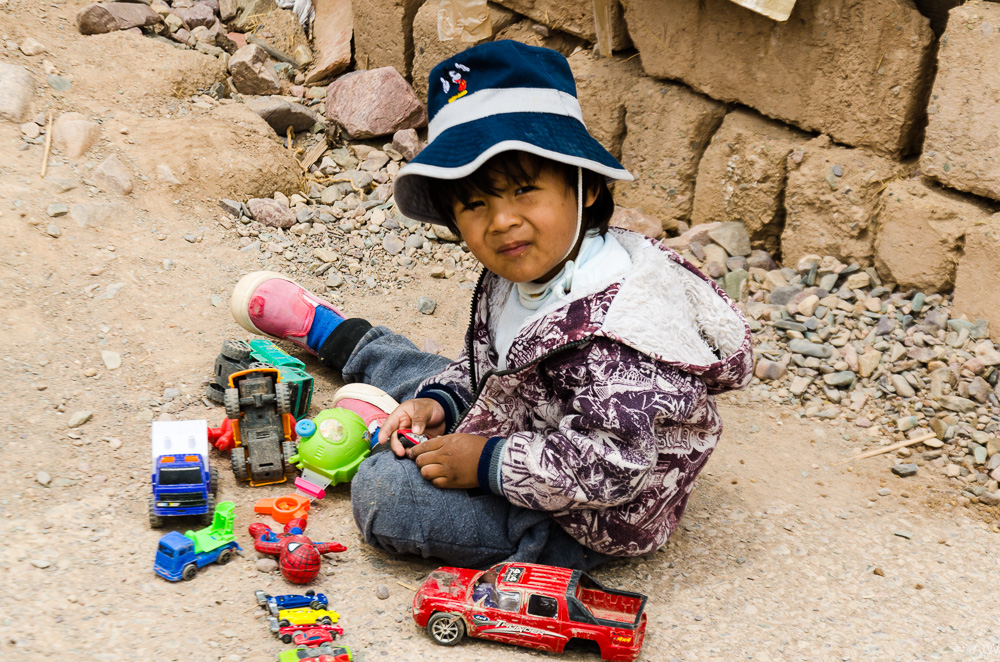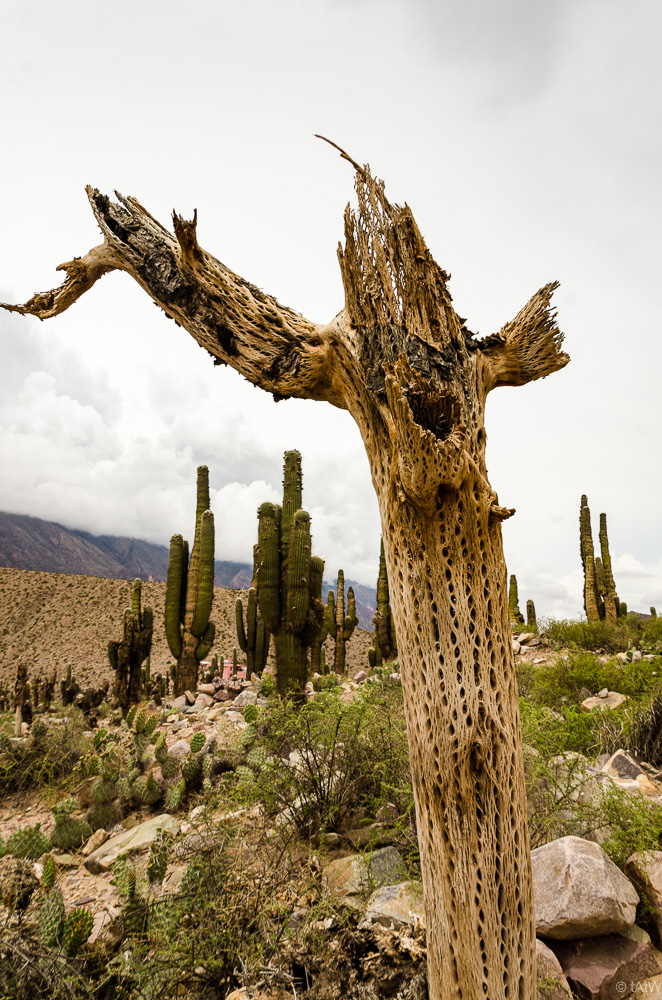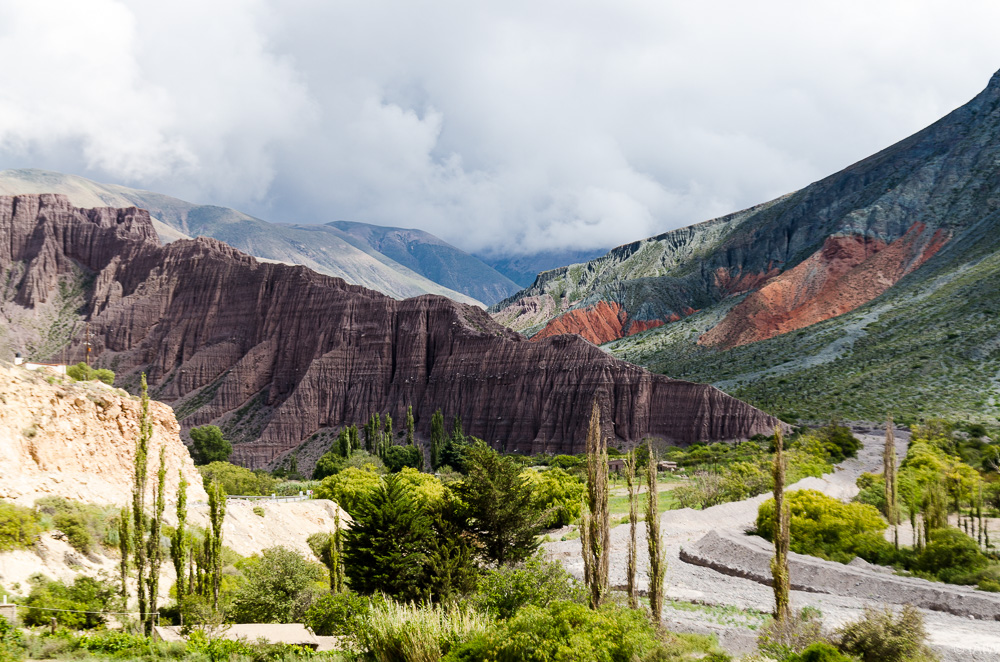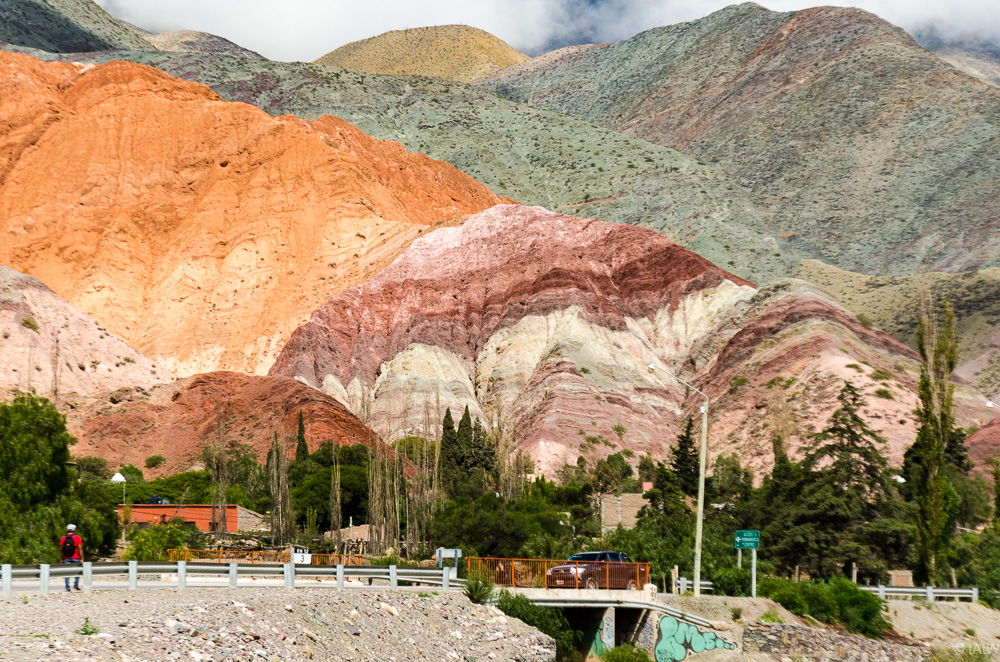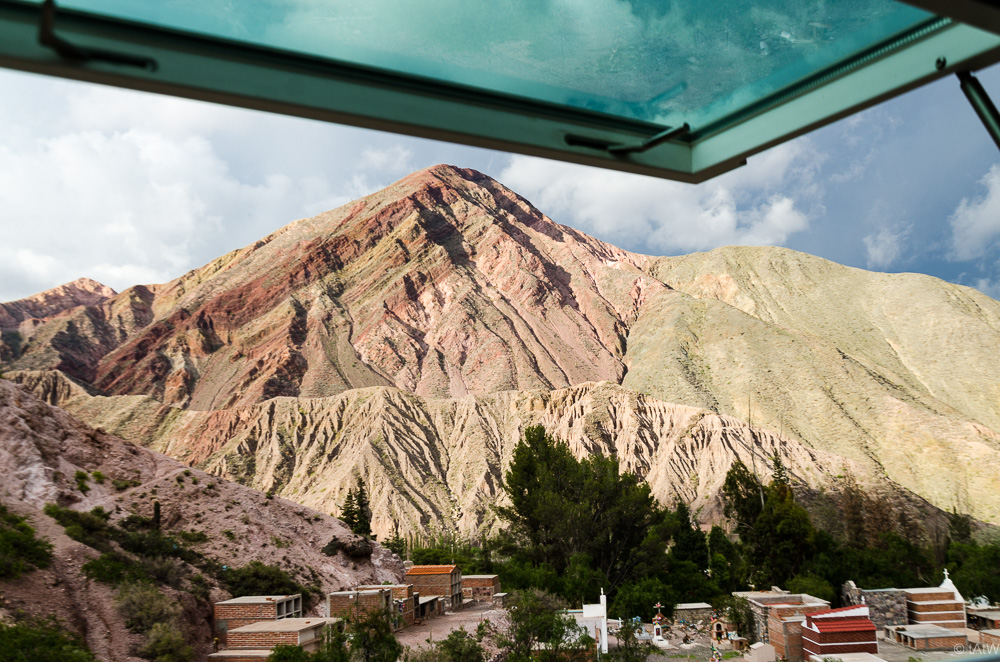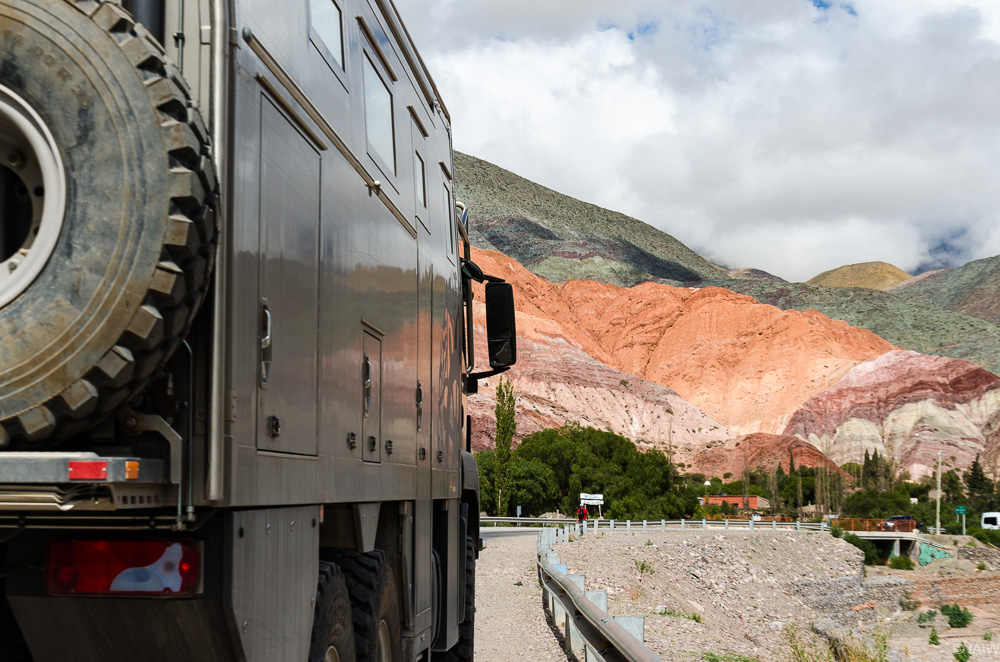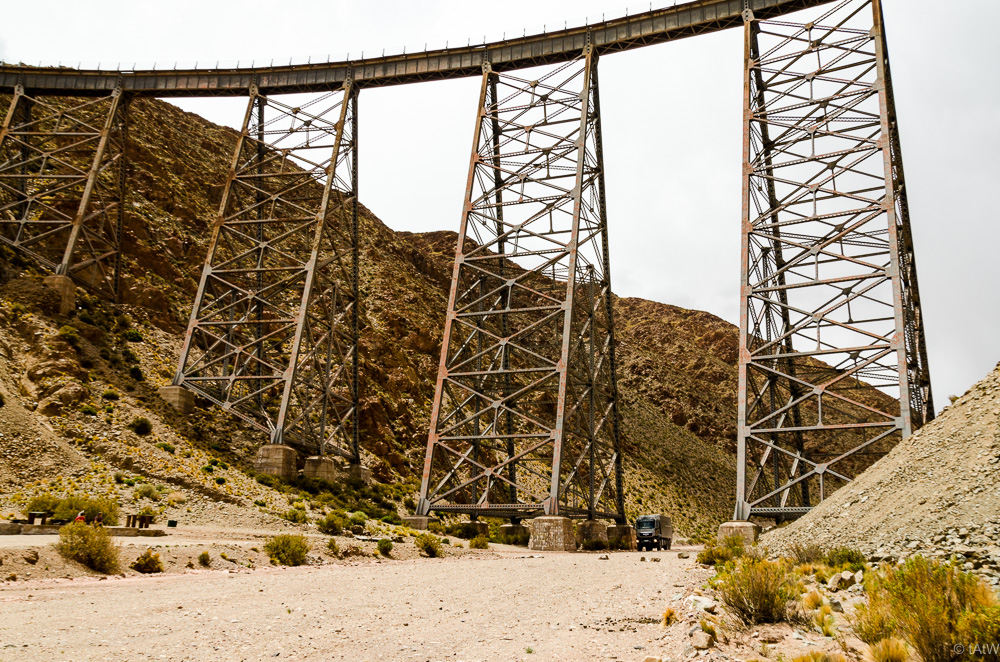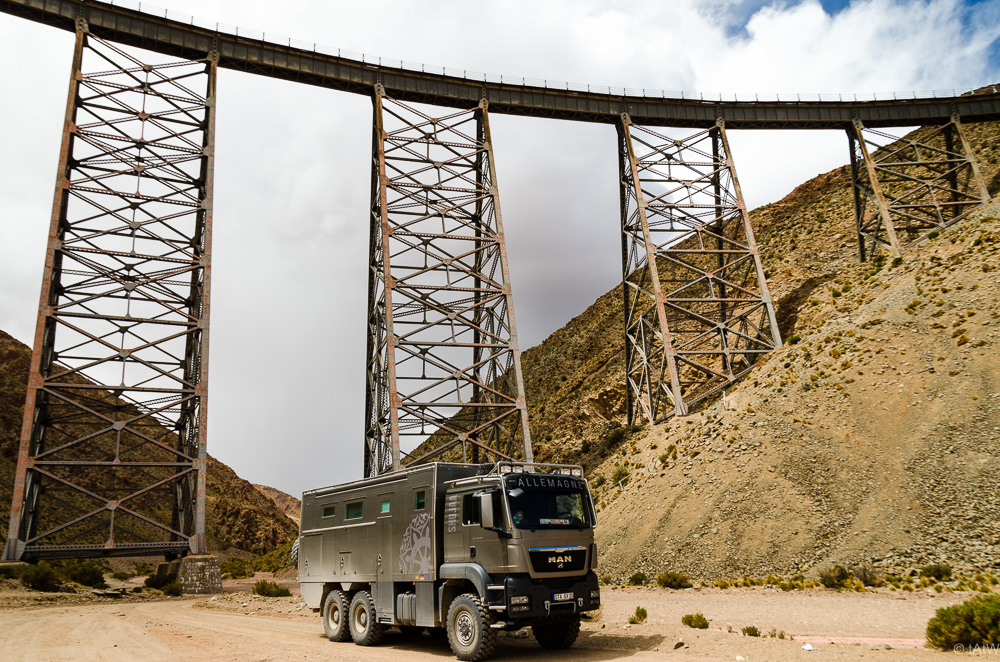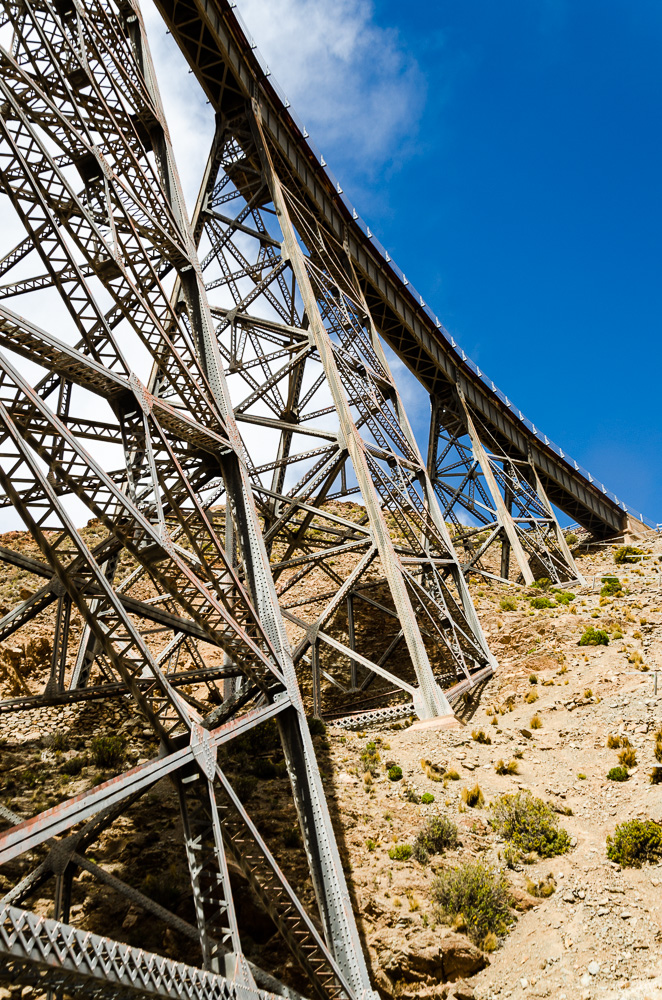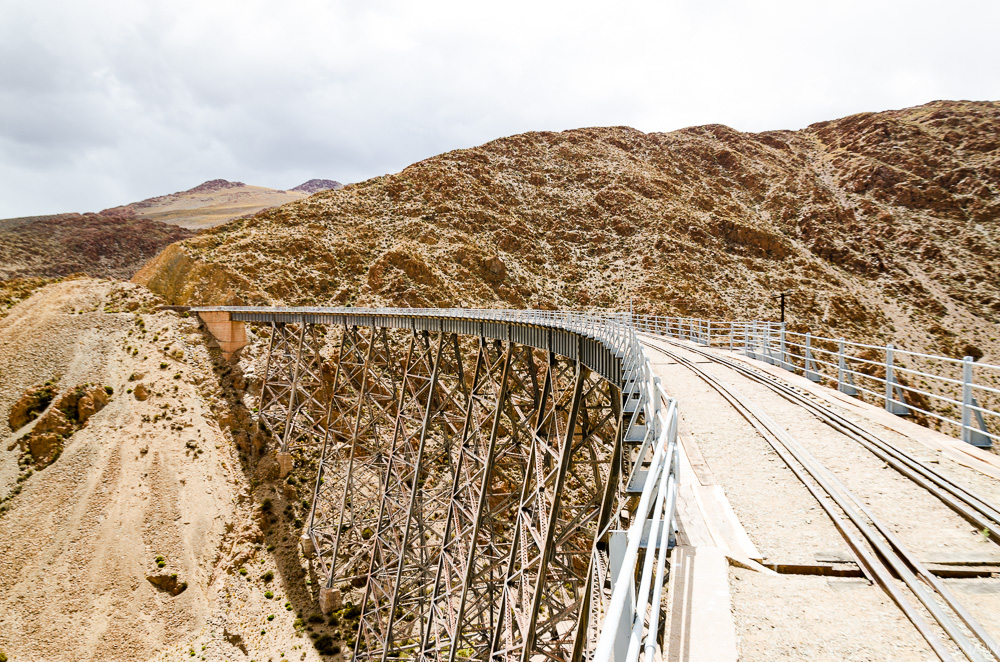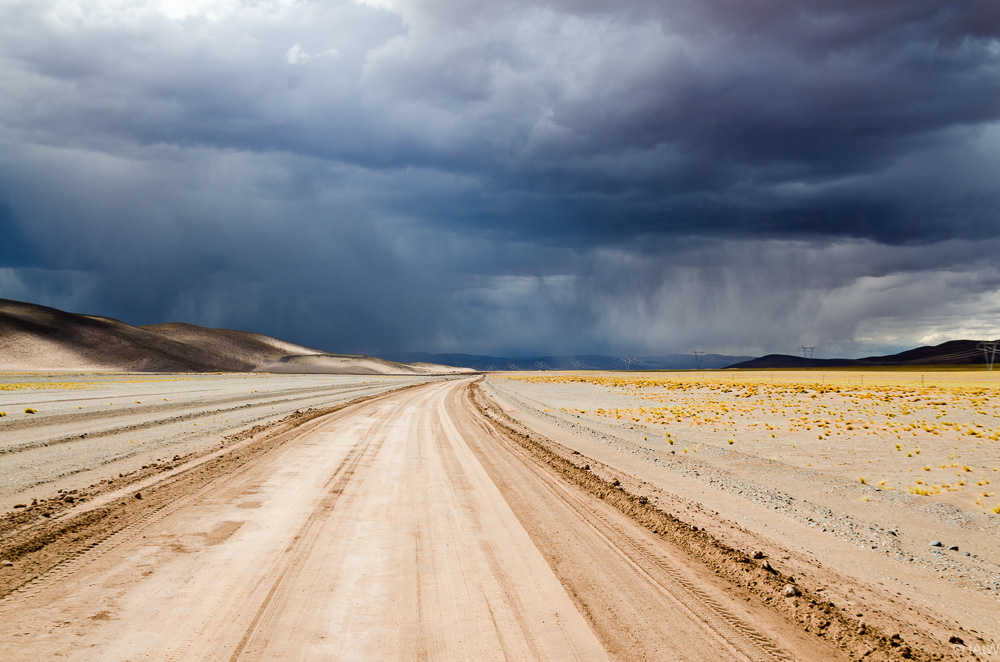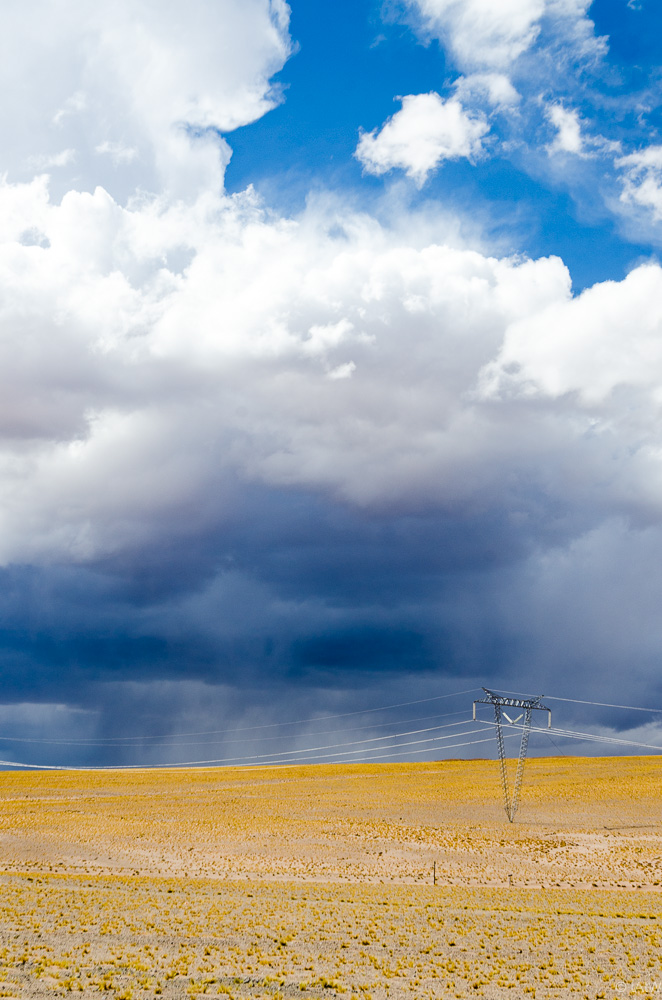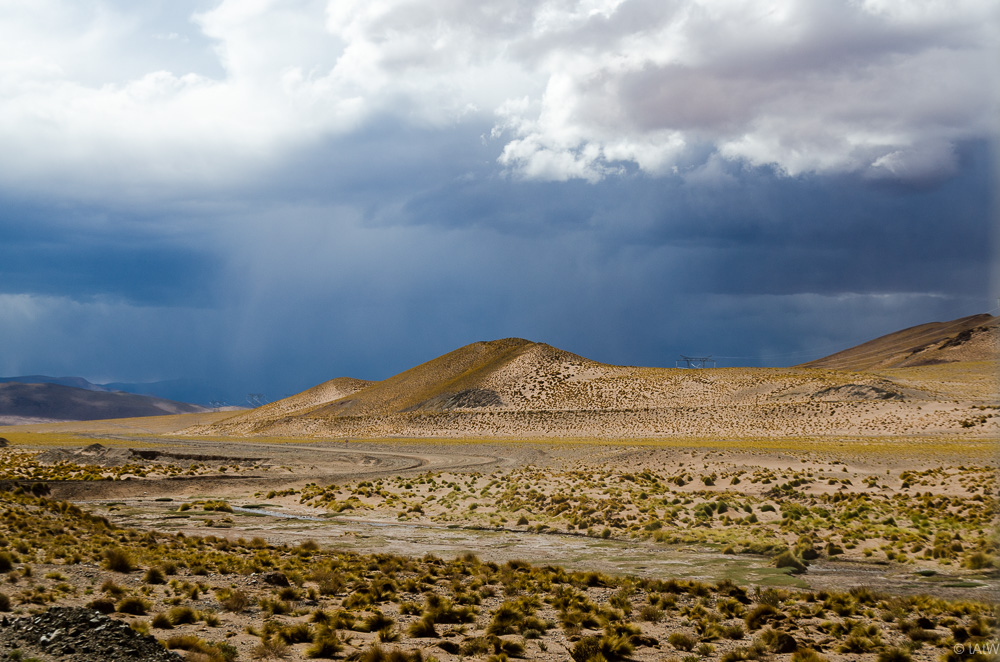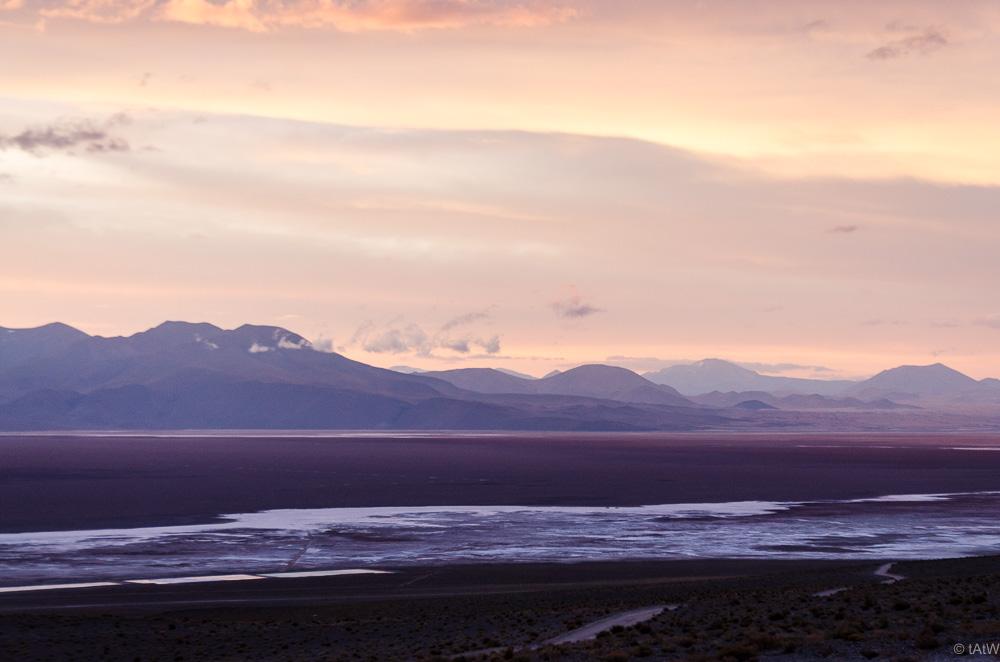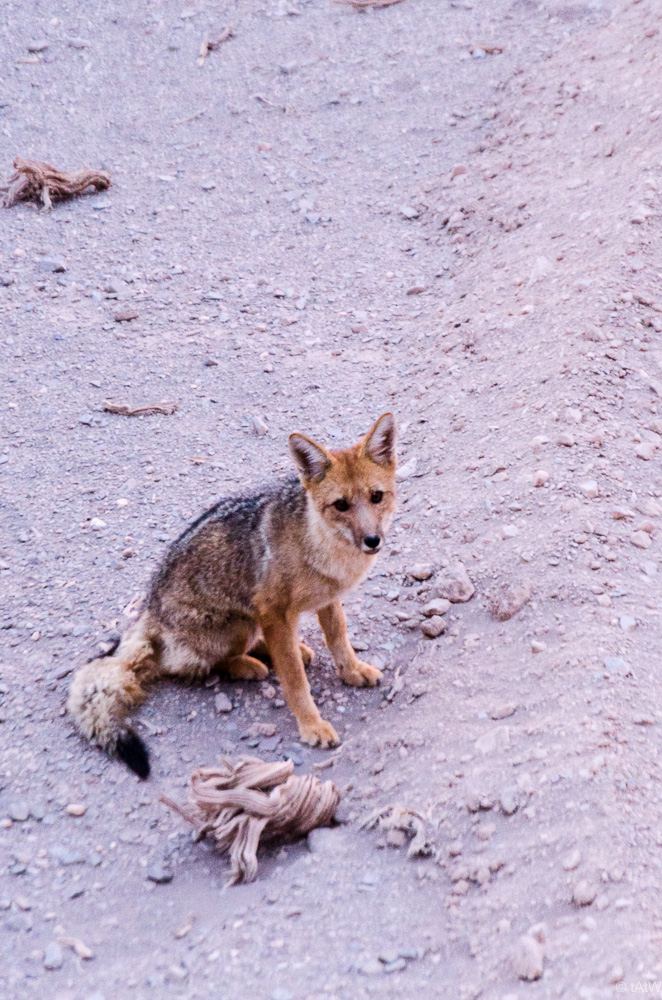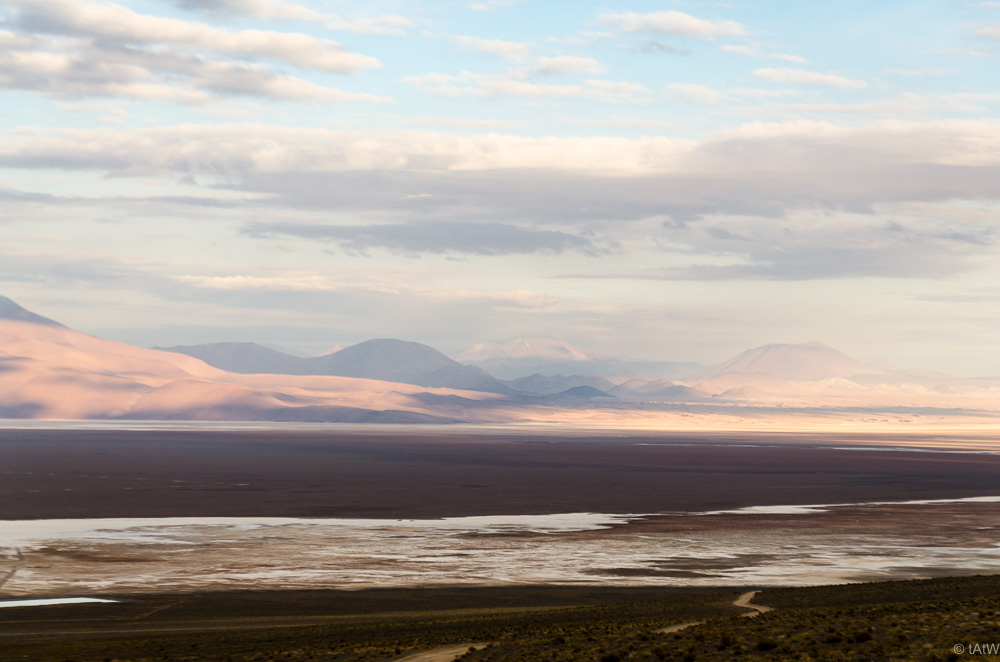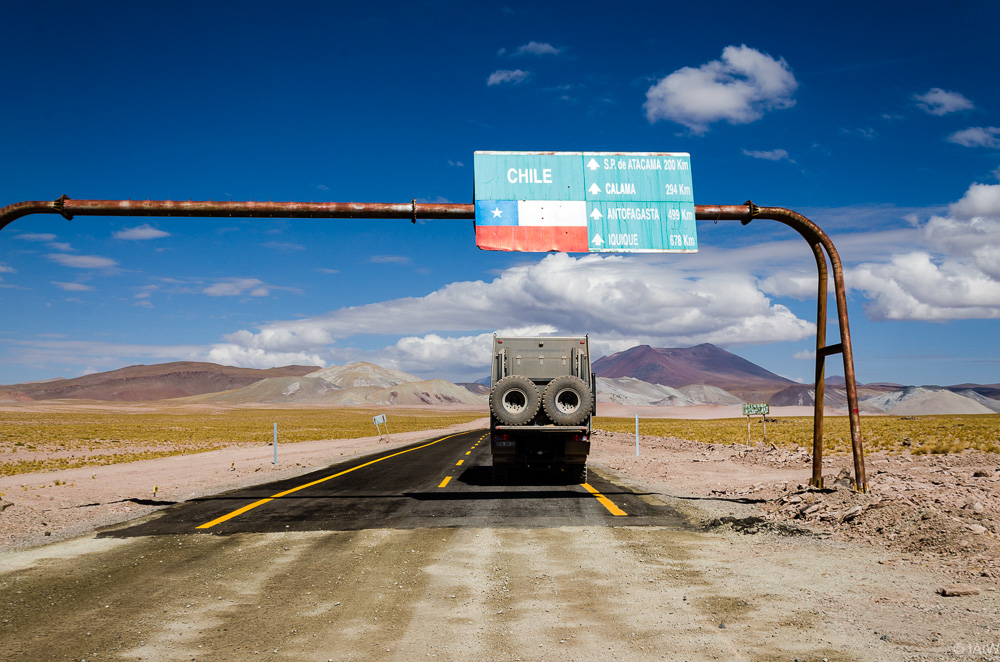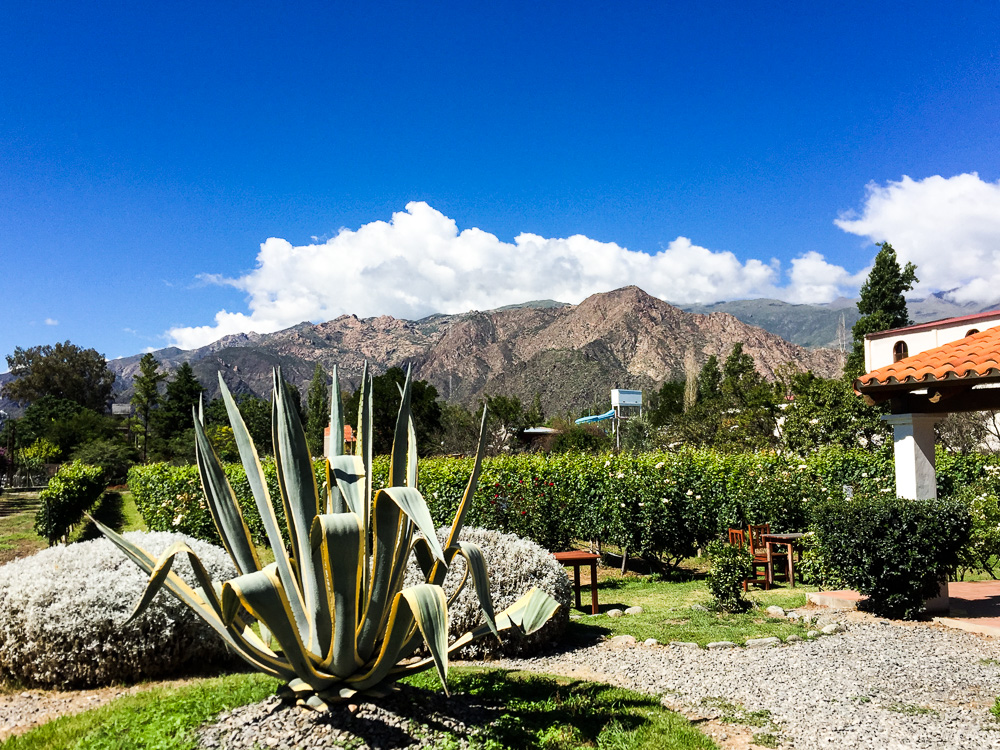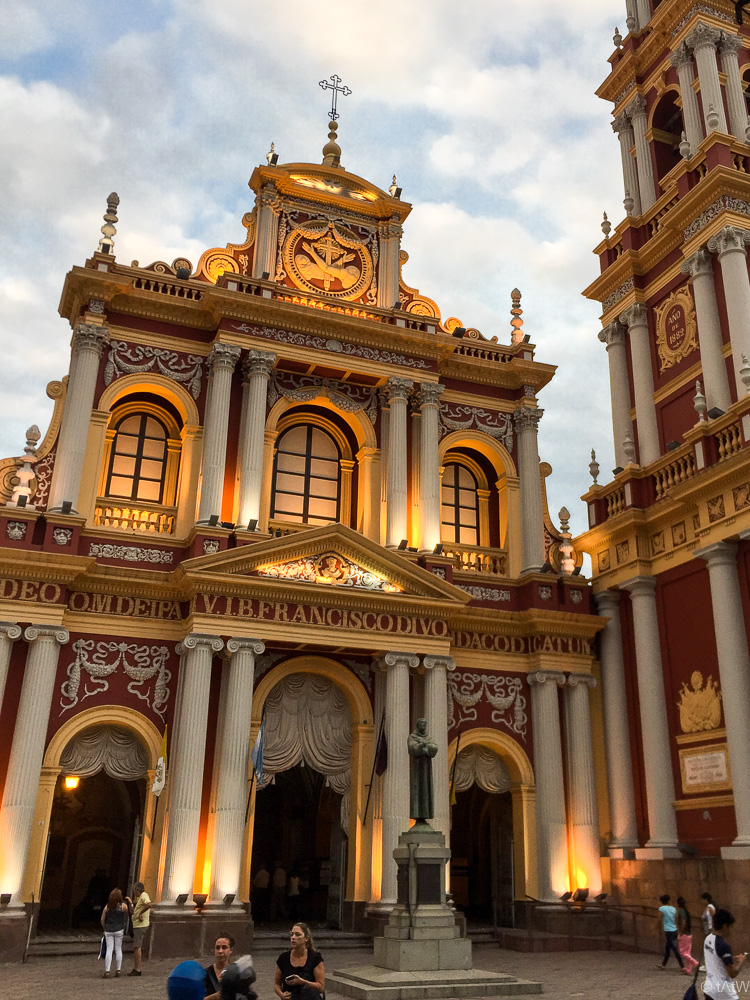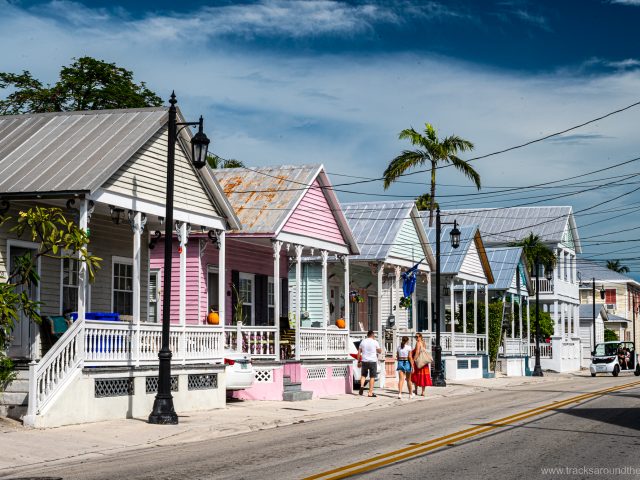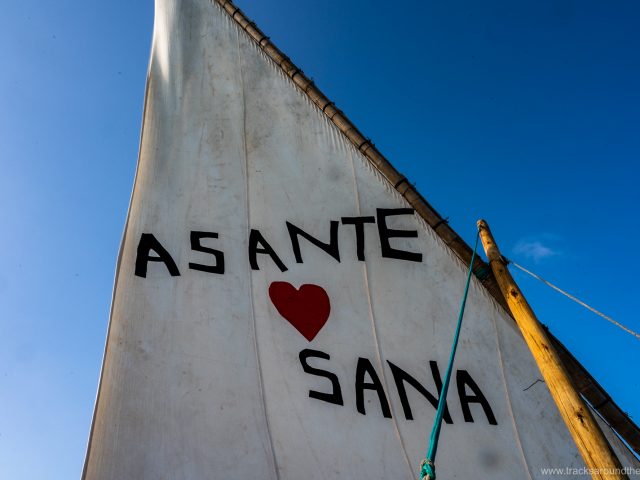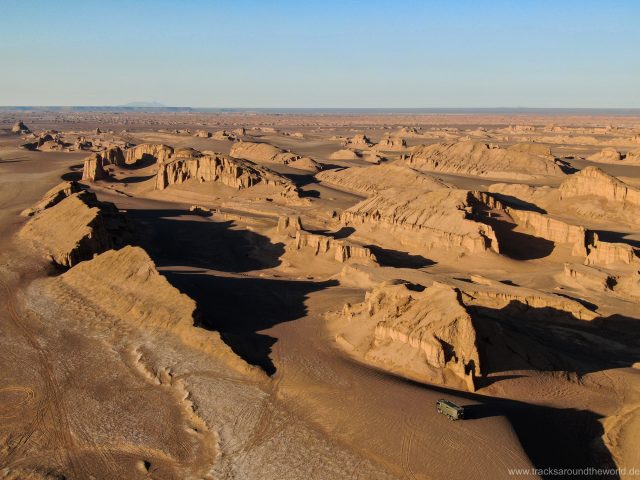After the dreamlike experience at the Dakar 2018 we drive into the national park Valle de la Luna / Ischigualasto. There are very beautiful rock formations and many remnants of dinosaurs from the time when in this region instead of dry stone desert nutritious rainforests existed because the Andes did not yet exist and thus the humid Pacific currents were able to penetrate this region. Something strange for us as an absolutely self-sufficient individual travelers is that the park can unfortunately only be passed in a car convoy and so we travel with about 15 other cars along the tracks.
We continue north and we make a detour to the Termas de Fiambala. There are 13 natural pools with hot volcanic water in a wonderful rocky gorge at 1,900 meters. The top pool is over 42 degrees so hot that you can hardly stand it, the lowest pool has a pleasant long-term stay temperature. We arrive in the afternoon and occupy a dream overnight place on the lowest parking level with “unprepared” views of the valley and the Andes, wait for the pools to become a bit more empty and spend the evening for a few nice hours in the warm water and have several pools even for us alone. In fact, the volcanic thermal baths are quite invigorating and buoyant so that we fall into our bed – located just a few meters below the thermal baths.
About 400 km further north we come to the southernmost Inca ruins and then to Cafayate – the northernmost and after Mendoza second largest wine-growing region of Argentina. A really nice little town with a beautiful plaza – no comparison with the dusty, faceless places in South Argentina – and of course many nice bodegas. For sure, we visit and taste different bodegas and their wines, but we buy less here, because for us – as a primary white and rose drinkers – the white wines here are too sweet and too heavy.
From Cafayate, we pass through spectacular slopes and rock valleys to Cachi, 2,400 meters above sea level, and here time seems to have stood still. Outside the village, we move to our overnight place on a sandbank in the river – hopefully it will not rain that night.
The next morning we experience the most dramatic change of nature in a very short distance on our world tour. First, we climb a plateau of thousands, huge, beautiful candelabra cactus (up to 10 meters tall). From the pass at 3,400 meters onwards, it suddenly gets greener while we drive down to Salta. The dry stone desert turns into a lush rain forest within only 30 km of distance. At the bottom we drive through lushy green fields to Salta, which is (again) considered to be the most beautiful city in Argentina. We find it a nice town and eat – on our last days in Argentina – our best steaks. With Shujaa we have done “street parking” close to the city center in a good residential area: the residents were quite surprised when they saw our baby parked in front of their door the next morning.
From Salta we drive to the Quebrada de Humahuaca – a valley between 2,500 and 3,000 meters high with multicolored mountains. A particularly impressive mountain is called “Cierro de Siete Colores” (Mountain of the Seven Colors). We spend a few nice days there before we drive to the famous Viaduct de la Polvonila. Here, the railroad “Tren de las Nubes” on the route from Salta (Argentina) to Autofagasta (Chile) has its peak at 4,200 meters. The viaduct itself was a technical masterpiece led by US engineers. Originally, the train was built for the transport of saltpeter. A few years ago, the train was still purely for tourist purposes, today it stands at the station of San Antonio de los Cobres and rots slowly.
We continue towards the Chilean border, come into a thunderstorm and spend the night at almost 4,000 meters – by far our highest night place. Karin in particular has height problems: headaches and nausea make her spend the night on the couch instead of in bed. We both are sleeping badly that night. At least the storm is getting better and we have a dream view of the Salar de Rincon from our pitch.


